What is Media Archaeology? — out now
It’s out, and gradually in book stores — What is Media Archaeology? (Polity),
my new book about media archaeology (what a surprise)!
It picks up where the edited volume Media Archaeology: Approaches, Applications, and Implications (Huhtamo and Parikka) left off; this means the implications bit, and how media archaeology relates to other recent discussions in art, cultural and media theory: software studies, new materialism, archives, and more. In other words, it complements the earlier collection.
So in short,
1) What IS media archaeology?
– depends who you ask. If you ask Erkki Huhtamo or Siegfried Zielinski, you might get a different answer than from asking me. For Huhtamo, it is the recurring topoi/topics of media culture; for Zielinski, a poetic exploration of deep times and variantology; and so forth. For me, it is an exciting theoretical opening to think about material media cultures in a historical perspective. However, it expands into an experimental set of questioning about time, obsolescence, and alternative histories as well. In one way, it is about analyzing the conditions of existence of media cultural objects, processes and phenomena. It picks up on some strands of “German media theory”, but connects that to other debates in cultural theory too.I like what Bernhard Siegert has said about the early ethos of media archaeology being that of Nietzschean gay science — experimental, exploratory, radical. Perhaps in this vein, media archaeology is one answer to the need to think transdiscplinary questions of art, science, philosophy and technology.
2) Isn’t it just media history that tries to rebrand itself?
– No, not really. A lot of the media archaeological work expands to strong theoretical arguments as well as quite different sorts of historical inquiry than one recognizes in media historical work. Having said that, perhaps this is where the interesting connections are emerging; how media archaeology can contribute to media historical inquiry as well as to thinking about archives and cultural memory. There is one chapter on archives in this new book. A lot of media archaeology owes to earlier new cultural histories and new historicism, so the link is there.
3) Isn’t media archaeology only a footnote to Kittler’s work?
– That would be unfair towards a bunch of other theorists, German and non-German. Kittler himself denied being a media archaeologist, even if a lot of the stuff has taken much inspiration from him and the idea of looking at “conditions of existence” of cultural formations through (technical) media. Even Germany is filled with media archaeological work, since 1980s, and a lot of that expands to such new directions as Cultural Techniques (Siegert, Krajewski, Vissman, and others) as well as other media archaeologists — not least Wolfgang Ernst. In addition, the book offers an insight to other media archaeological theories, such as Huhtamo’s, Zielinski’s, new film history (Elsaesser et al) as well as the links to emerging media studies fields such as digital humanities (eg Kirschenbaum’s work).
4) Sounds like the book is all theory, huh?
There is more than just media theory — although I admit, that because of the nature of the book, was not able to work too much of new empirical material there. However, one key thing that pops up in the book is the use of media archaeology as an artistic method. There is a whole chapter dedicated to that. I think one of the most exciting directions is to see how these methodologies can be used in design, arts and other fields of creative practice that anyway are interested in themes of obsolescence, media and technological affordance, the environment and ecology, remix and for instance hardware (even analogue!).
5) What next?
– No more media archaeology for me. Well, I have jokingly promised that I won’t use the term anymore, even if I am interested in seeing where this term might take us. I will come up with a disguise, a theoretical disguise.
6) your chance to ask me a question!
– and I will answer, if I can.
Meanwhile, here is the info about the book:
(From the Publisher’s catalogue and website):
This cutting-edge text offers an introduction to the emerging field of media archaeology and analyses the innovative theoretical and artistic methodology used to excavate current media through its past.
Written with a steampunk attitude, What is Media Archaeology? examines the theoretical challenges of studying digital culture and memory and opens up the sedimented layers of contemporary media culture. The author contextualizes media archaeology in relation to other key media studies debates including software studies, German media theory, imaginary media research, new materialism and digital humanities.
What is Media Archaeology? advances an innovative theoretical position while also presenting an engaging and accessible overview for students of media, film and cultural studies. It will be essential reading for anyone interested in the interdisciplinary ties between art, technology and media.
And the blurbs:
‘Jussi Parikka offers a lucid, concise, and highly readable account of a new and exciting field – media archaeology. He demonstrates that contemporary media forms are rooted to the past by multiple threads – untangling them helps us understand the media frenzy that currently surrounds us.’
Erkki Huhtamo, University of California Los Angeles
‘A fabulous map of media archaeology that, as its subject compels, produces its territory anew.’
Matthew Fuller, Goldsmiths
‘The most comprehensive coverage to date of this fascinating area of study. Parikka’s book offers an excellent overview of connections between the material and social aspects of media technology. He provides a thorough review of the diverse and sometimes contrasting theoretical foundations and provides a host of concrete examples of media-archaeological practice that serve to bridge the gap between heady theoretical trajectories and the concerns of practicing artists, users and other readers who take their technology seriously.’
Paul DeMarinis, Stanford University
Table of Contents
Chapter 1
Introduction: Cartographies of the Old and the New
Chapter 2
Media Archaeology of the Senses: Audiovisual, Affective, Algorithmic
Chapter 3
Imaginary Media: Mapping Weird Objects
Chapter 4
Media Theory and New Materialism
Chapter 5
Mapping Noise and Accidents
Chapter 6
Archive Dynamics: Software Culture and Digital Heritage
Chapter 7
Practicing Media Archaeology: Creative Methodologies for Remediation
Conclusions: Media Archaeology in Digital Culture
Note: the book is hitting the bookstores now in the UK (May), and soon in North-America (June) and rest of the world.


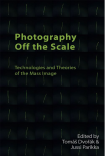
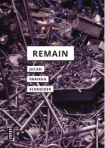
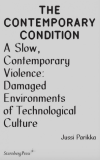

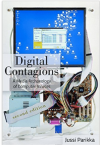





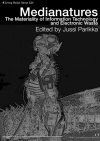





Reblogged this on Anthropo-eccentrism and commented:
A very exciting new release. After having recently read your Insect Media, I’m very much looking forward to this book, especially the chapter on “Weird Objects.” I’m curious to see what the publisher means by the “steampunk attitude” of the writing. Was this in your mind as you worked on the book, or is it a case of marketing gone haywire?
Hi! Steampunk attitude makes a line marketing line, at least! 🙂 I guess it refers to how I want to briefly address not only media archaeological theory, but the culture of retro, imagined pasts, and the entanglement of fiction as part of our technological culture — so of course, a nod towards steampunk (fiction) made sense (and the cover is very steampunky, no?) However, steampunk is only one part of the whole book, and indeed, for instance one chapter on the idea of imaginary media – a term elaborated by for instance Eric Kluitenberg, but here picked up through a material reading of the concept.
Looks great. Looking forward to reading it!